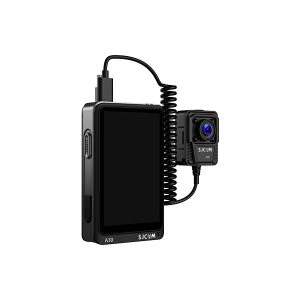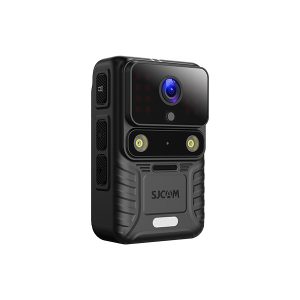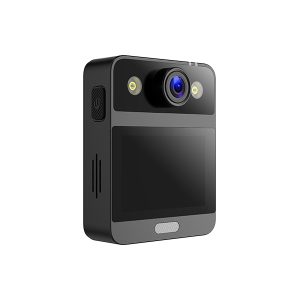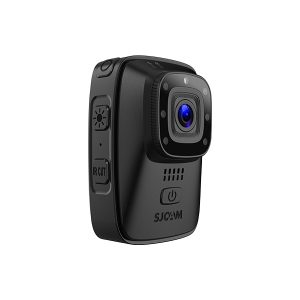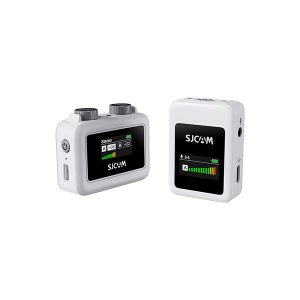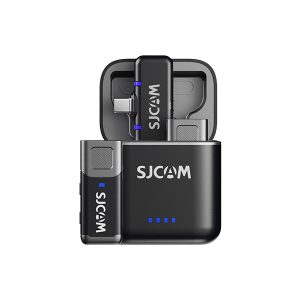世界上最小的相机是什么?
您是否想知道相机在冒险和即时拍摄时可以达到多小的尺寸?毫无疑问,世界上最小的相机尺寸为 0.65 x 0.65 x 1.158 毫米,这是一个令人惊讶的事实。然而,人们的主要关注点是使用 运动相机另一方面,如果我们谈论最小的相机,我们可能会遇到 最小的 4k 摄像机 世界上已知的尺寸为 1.77 英寸宽和 1.77 英寸高。几乎是一个完美的正方形!
这些摄像头在全球很受欢迎,因为人们用它们来娱乐和监视他们的家或工作场所。当然,这些摄像头由于体积小而难以定位,用户经常会因为其隐蔽性而忽略它们。

各行各业都使用小型摄像机来监视员工以及产品的制造过程。企业使用这些微型摄像机来观察人眼无法到达的地方。这样,如果他们的工具出现任何问题,他们就可以立即用小型摄像机找到它。
微型相机的演变
相机的历史可以追溯到 19 世纪,因为那是人类第一次发明相机。然而,当谈到紧凑型相机时,情况就完全改变了。在 19 世纪末,紧凑型相机被用作隐藏式相机。
到 20 世纪,许多行业都使用这些相机来保护其财产,它们开始流行起来。很快,这些设备就引起了寻求更好效果的相机制造商的注意。
随着时间的推移,相机中增加了许多功能,让购买相机成为一项不错的选择。但它并没有止步于此;现在,人们能找到的最小的 4k 相机大多在医院里,用于高难度的手术。

最小相机的特点
制造商试图让他们的相机尽可能轻巧紧凑。人们更喜欢小型相机,因为它便于携带。毕竟,谁愿意一直带着一台大相机呢?
市场上有多种类型的相机可供人们搜索。每个人都有不同的偏好。许多人喜欢购买紧凑型相机,可能小到像钥匙链或信用卡一样。相比之下,其他人可能更喜欢稍大一点的相机,以获得更好的图像质量。如果你想买一台小型相机,首先要了解你的需求。
您希望相机的像素达到多少?您想要更好的图像质量吗?还是您只是为了好玩而购买相机?微小的因素可能会改变适合您需求的相机类型。
小型相机的相机传感器可能无法提供与数码单反相机一样的图像或视频,但它仍然可以工作。制造商通常会在相机尺寸和电池寿命之间取得平衡。小型相机的电池寿命不可能很长。
在这种情况下,制造商会制造可充电或可更换的电池。这样,人们就可以长时间使用相机而不会遇到任何问题。
应用程序和用例
监控和安全
小型摄像机在许多行业中都有广泛的应用。它们是监控和安全用途的绝佳选择。它们体积小,很难被发现和移除。此外,小型摄像机可以录制其他摄像机无法录制的视频。
医学和科学成像
人眼无法深入人体内部。因此,小型相机在医疗行业非常受欢迎。借助这些小型相机,人们可以完美地想象出内部器官,用于多种用途。从科学角度来看,这些相机可以在尺寸限制至关重要的微妙环境中提供帮助。
消费电子产品和智能手机
相机在消费电子产品中的集成是不可否认的。此外,智能手机通过整合高质量的小型摄像机使事情变得更加有趣。几乎全世界每个人都用手机用手机上最小的摄像机拍摄视频。

无人机和机器人
小型摄像机在无人机和机器人中的应用已经广为人知。这些设备使用这些摄像机来导航和记录周围环境,人们随后可以使用它们来安全地研究环境。
可穿戴设备和运动相机
可穿戴设备具有人们日常生活中使用的各种应用。智能手表具有这些摄像头,人们可以用它来进行视频聊天或成像。此外,运动相机因其耐用性和在水下或登山环境中的易用性而广受欢迎。
小型化中的技术挑战
制造商在制造微型相机时面临多重挑战。这些挑战包括过热、镜头限制以及传感器和处理器限制。由于相机尺寸小,在活动期间热量无处散发。因此,制造商想出创新的办法来改善小型相机的导热性。
由于镜头较小,小型相机在有光的环境下可能无法拍出好照片。由于相机体积较大,画质也会受到很大影响。此外,小型相机无法达到最佳变焦条件,无法获得更好的成像效果。相比之下,传感器是运动相机的主要难点。
小型摄像机无法集成大型传感器,这大大降低了任何小型摄像机的图像质量。由于其处理能力有限,它们很难处理与视频相关的复杂任务。
最小的相机
SJCAM C100 迷你运动相机
这 SJCAM C100迷你运动相机 包含 1/4 英寸 CMOS 传感器、2 MP 百万像素、30fps 720p 视频分辨率、120 度视角等等。您可以将其连接到 Wi-Fi,并且防水。它旨在捕捉极端和严酷的时刻。内置屏幕支持视频播放,Wi-Fi 连接允许在线共享内容。

SJCAM C100+ 集小巧便携的设计、4K/30FPS 录制功能、防水功能、磁铁安装、多视角和稳定性于一体。凭借其网络摄像头功能、延时摄影、汽车模式以及与各种配件的兼容性,C100+ 可提供多功能和身临其境的拍摄体验,可捕捉不同环境和活动中的精彩瞬间。
这款相机最适合记录简单的动作,例如户外活动。它的尺寸和设计使其易于随身携带。
客户评论称赞 SJCAM C100 的便携性、易用性和价格实惠。但值得注意的是,一些用户发现其视频质量与市场上更先进的运动相机相比有限。
SJCAM C200小型运动相机
这 SJCAM C200小型运动相机 包含 1/2.3 英寸 CMOS 传感器,具有 16 兆像素,视频分辨率为 30fps 的 4K、30fps 的 2.7K 和 60fps 的 1080p。此外,它还提供 166 度视野。它具有 2 英寸 LCD 触摸屏、Wi-Fi、HDMI 和防水功能。这款相机是 Sjcam C100 的升级版,提供更高的视频分辨率。

SJCAM C200 是一款小巧的运动相机,擅长拍摄高质量的 4K 镜头。凭借其防抖技术、防水机身、迷你外形、人脸识别拍摄、语音提醒、外接麦克风支持、Wi-Fi 远程控制、长电池寿命、金属散热和多场景应用,C200 提供了一系列功能和能力,可在各种环境中捕捉动感十足的时刻。
它适合需要更高视频分辨率和更好图像质量的人。它的尺寸和构造适合各种极限运动、户外探险和旅行视频博客。
客户评论强调了这款相机的性价比、设计和令人满意的视频质量。C200 能够以实惠的价格拍摄 4K 镜头,这受到了那些寻找性能不错、价格实惠的运动相机的用户的积极评价。
微型相机的未来趋势
微型相机的未来趋势非常广阔,运动相机涉及多个领域,如纳米技术、增强现实、人工智能等,这些都是全球流行的技术趋势,代表着人们关注的世界的未来。
利用纳米工程技术,可以精确控制图像传感器、镜头和其他相机部件的结构和性能。这可以显著减小相机尺寸,同时保持甚至提高图像质量和性能。
微型摄像机的未来可能会与增强现实和人工智能技术无缝集成。增强现实将数字信息叠加到现实世界中,微型摄像机在捕获增强现实应用所需的视觉数据方面可以发挥关键作用。
微型相机在未来几年可能会进一步小型化和创新。微电子、材料科学和制造工艺的进步将带来更紧凑、更高效的相机组件。
结论
微型相机的前景一片光明。技术已经做出许多调整,使最小的 4k 相机成为可能。总体而言,紧凑型相机的未来特点是不断创新,影响日常生活。我们可以期待这些小巧而强大的设备长期处于视觉通信的最前沿。







 天猫商城
天猫商城 京东店
京东店 Aliexpress 商店
Aliexpress 商店 亚马逊商店
亚马逊商店
















